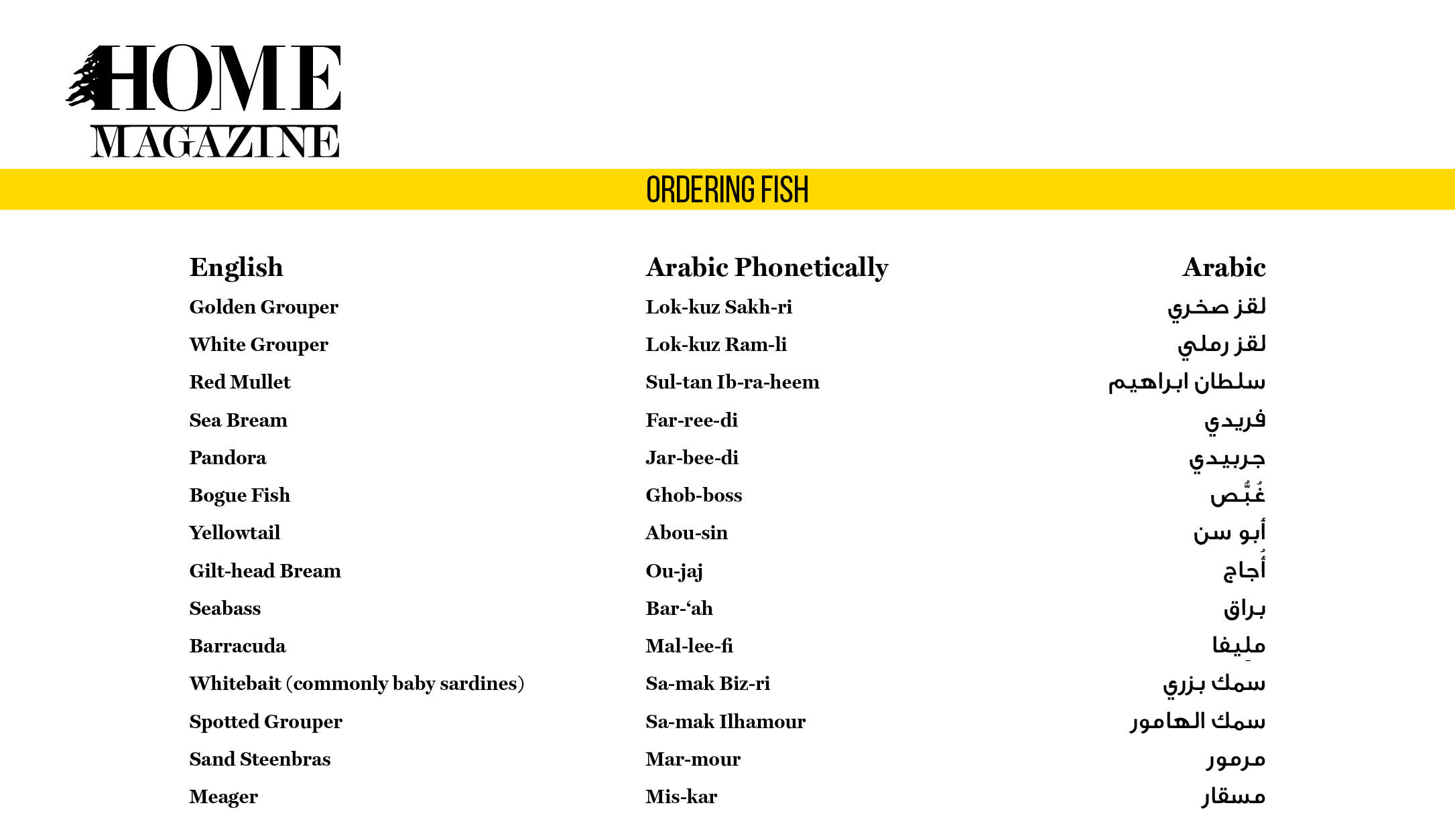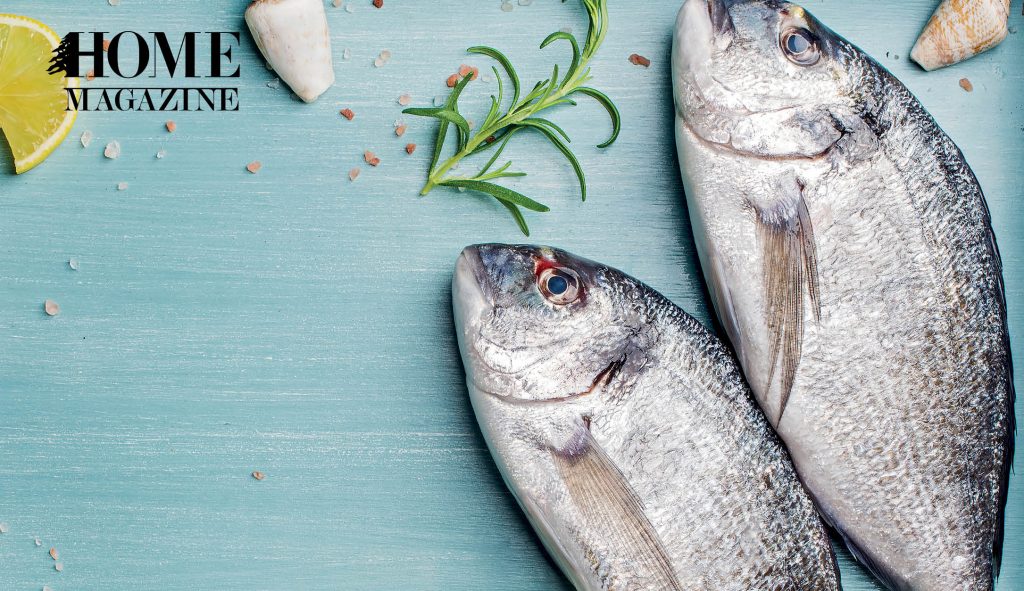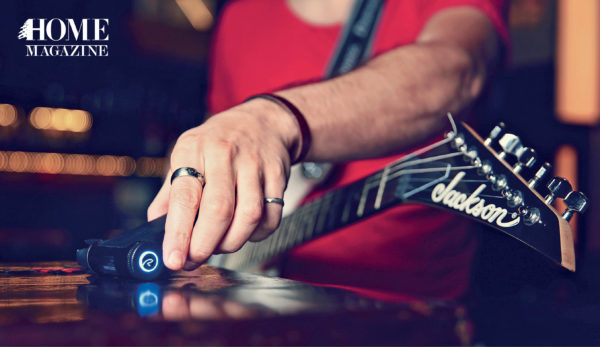Eating fish in Lebanon is an experience like no other. While we share the same sea with our Mediterranean neighbors, our fish have their own special flavor. That’s because we have our own Lebanese recipes, accompanying mezza and, of course, the warm social ambience of a Mediterranean country.
Fresh from the sea
Those in the know visit the famous fishing cities, such as Tyre and Batroun, for authentic, delicious fish dishes in established restaurants. Some wellknown favorites are Sultan Ibrahim, Bistr’ eau in Batroun, Um Ali’s in Saida and Le Phénicien in Tyre.
Monique Bassila Zaarour, a renowned dietitian in Lebanon, recommends eating fish, not only because it is flavorful, but especially because it is so good for us.
“Their health benefits are well known in the world of nutrition. If consumed properly, they are believed to help protect against many diseases. They are a very important source of protein, vitamins A, E and K, phosphorus, iron, zinc, magnesium and polyunsaturated fats, particularly Omega 3.”
Fortunately, Lebanon offers an array of delicious fish. Bizri, fried baby sardines, with a splash of lemon, are served on a heaping platter to eat with your hands like chips.
Fish kibbeh, a variation on the popular Lebanese dish, stuffed with ground fish and bulgur instead of meat, is a tastytreat. And samkeh harra, which means “spicy fish,” is a local favorite.
If you’re not local, there’s a good chance you’ll be invited to a scrumptious fish dinner. Lebanese are known for their hospitality and are always eager to share their know-how when it comes to tantalizing food. The only risk you run is overeating from the delicious spread!

Translating the names of fish was surprisingly complicated, although we consulted several dictionaries, online and famous chefs. That’s because the names differ from one Arab country to another. We are building a list of names commonly used in Lebanon. We welcome your input to expand this table.
Lebanon’s fish
To eat fresh from the Mediterranean like a connoisseur, a little knowledge on local fish goes a long way. There are two main categories of fresh fish – native and seasonal. Native fish are in Lebanon year-round, while seasonal fish migrate here during certain times of the year. You can be sure to find farride, a staple of Lebanese fish, always available in restaurants and markets. Fishermen often catch them in traps rather than by hook and line, because of their size.
Mohamad Yamani, 25, has been fishing on Lebanon’s shores for the past six years and is passionate about how fish is cooked. “Grouper fish are best when grilled in the oven after being stuffed with parsley, walnuts, garlic and lemon, plus a touch of chili sauce,” he said. “Red mullet and farride are best fried.”
It is also important to know when to eat different fish. Mohamad Sarji, captain of Scuba Divers of Lebanon, explained that red mullet need to be given time to grow and reproduce. They should not be caught before reaching their full length of about eight centimeters, which occurs in July and August, he explained. Another local fish, jarbide, grows significantly between February and April.
Migrating fish
Seasonal fish, like tuna and kingfish, are most likely to be found here in July, August and September, Yamani said. But tuna is more likely to be prepared as sushi than in Lebanese recipes. There is little local demand.
Kingfish, on the other hand, is popular in Lebanon. Its firm white, slightly oily, flesh holds its shape and texture when grilled or barbecued.
Sardines are among the most nutritious fish because they are loaded with vitamins and Omega 3. They are also rich in calcium, provided by its edible skeleton. The good news is that they are easily caught along Lebanon’s shores.

































